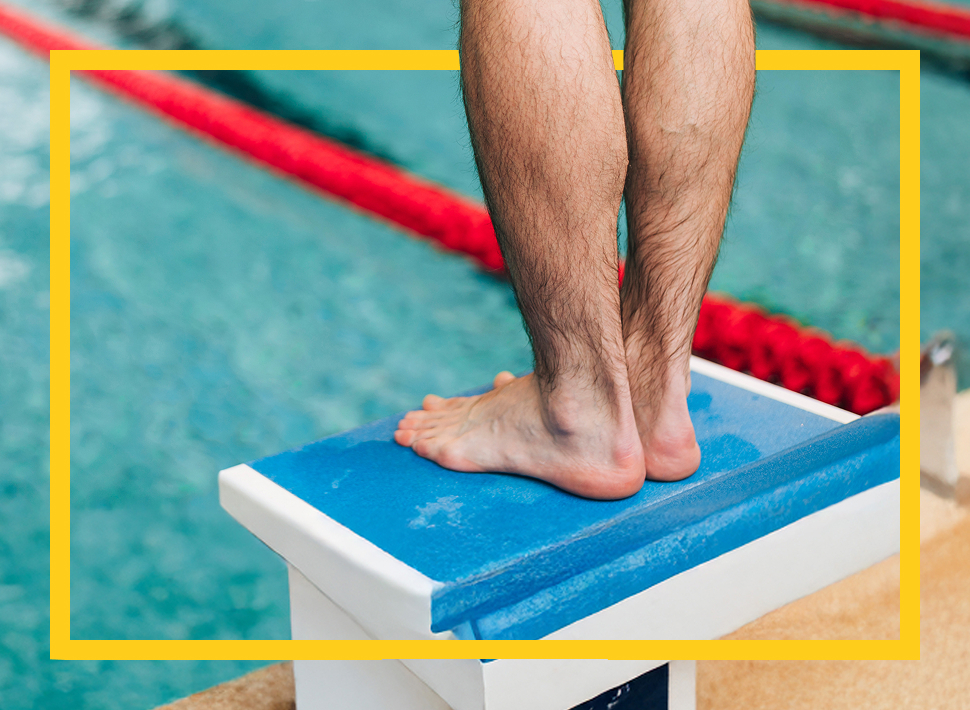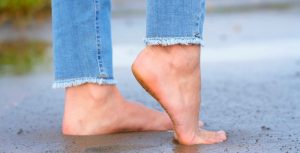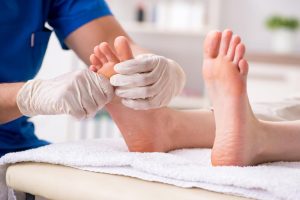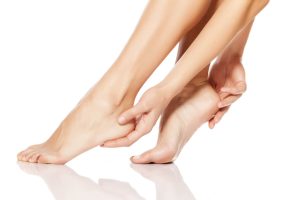Whether in the swimming pool, in the sauna or walking barefoot in a hotel room – athlete’s foot lurks in many places in everyday life. The skin infection is widespread, but can often be detected early and contained with simple measures. In this article, you will find out how athlete’s foot develops, what the typical symptoms are and how you can effectively protect yourself against it.
What is athlete’s foot?
Athlete’s foot(tinea pedis) is a widespread fungal infection of the skin that usually starts between the toes. It is often caused by dermatophytes – fungi that feed on dead skin cells. They find ideal growth conditions in warm, moist environments, such as shoes or communal showers.
People who sweat a lot, are often barefoot or have close skin contact with shared surfaces are particularly at risk. Infection usually occurs indirectly via floors, towels or shoes. Important: Even after the symptoms have subsided, spores can still be present on the skin – careful hygiene therefore remains crucial.
Recognize athlete’s foot: Symptoms at a glance
The earlier you notice the first signs, the better you can take countermeasures. Athlete’s foot usually appears gradually – with slight skin changes that can quickly become more intense.
Typical symptoms of athlete’s foot are
- Itching, especially between the toes
- Redness, irritation or swelling
- Scaly skin and a feeling of tightness
- Small tears, especially in the spaces between the toes
- Puffy skin due to moisture build-up
- Changed odor of the feet
Not all symptoms are always present at the same time. Sometimes the appearance is similar to other skin problems such as eczema or allergic reactions. If you are unsure, you should monitor your skin closely and seek medical advice if symptoms persist.
How does athlete’s foot develop?
Athlete’s foot develops where skin barriers are weakened and fungal spores feel at home – namely in a warm, moist environment. Areas between the toes or under the sole of the foot are particularly susceptible, where sweat is less able to evaporate and skin friction impairs the natural protection.
The most common causes include
- Moisture and heat: Closed, non-breathable shoes ensure that the skin softens – an ideal environment for fungi.
- Synthetic materials: socks made of polyester or nylon prevent air circulation and encourage perspiration.
- Minor injuries: Chafed skin or tiny cracks make it easier for fungal spores to penetrate the top layer of skin.
- Walking barefoot in public areas: Changing rooms, swimming pools or hotel room floors are typical places where fungi can be transmitted via skin contact.
- Weakened immune system: Anyone who suffers from chronic illnesses such as diabetes mellitus or has a sensitive immune system is particularly susceptible.
- Excessive sweating: People with very sweaty feet have an increased risk, as the skin remains permanently moist.
Athlete’s foot is therefore not caused by a lack of hygiene – but often by everyday situations in which the skin is exposed to particular stress. Runners and hikers, for example, are particularly affected.
How to reduce the risk of infection
If you want to protect yourself from athlete’s foot, you should not only take good care of your feet, but also integrate simple hygiene rules into your everyday life. Many infections can be avoided by making small changes to your usual routines.
- Always keep your feet dry: Dry carefully, especially between the toes – even after showering.
- Wear breathable shoes: leather or other air-permeable materials prevent sweat build-up.
- Change socks daily: Ideally made of cotton or wool – these absorb moisture better.
- Use flip-flops: Always wear shoes in swimming pools, saunas, hotel rooms or communal showers.
- Do not share towels and nail scissors: Personal hygiene items should not be shared – not even within the family.
- Check feet regularly: If you recognize the first skin changes early, you can react in a targeted manner.
These simple measures help to protect the skin – and at the same time prevent fungal spores from spreading unnoticed.
Treating athlete’s foot: What helps now
Targeted care is particularly important if your feet are regularly subjected to heavy wear and tear. Because only healthy, well cared for skin can withstand external influences – and reduce the risk of athlete’s foot.
Spirularin® F foot spray is a useful addition to daily foot care. This product was specially developed to protect the feet from fungal infections. It forms a protective film on the skin that protects against moisture and microbial influences. Spirularin® F Foot Spray with the patented microalgae active ingredient Spiralin® stabilizes the natural skin flora and promotes cell regeneration.
In addition to the foot spray, other Spirularin® products are also available. They all combine the microalgae active ingredient Spiralin® with nourishing ingredients such as vegetable oils (including rapeseed oil and rosemary oil with their essential fatty acids, antioxidants, vitamins and minerals) or moisturizing components:
- Spirularin® SR cream is particularly suitable for heavily stressed, cracked skin areas such as the heels.
- Spirularin® Mousse provides pleasantly light care for dry skin all over the foot.
- Spirularin® HF Gel is ideal for sensitive or irritation-prone areas of skin.
Well cared for skin is less susceptible to cracks and fissures, irritation or flaking – and is therefore also better equipped to combat the typical triggers of athlete’s foot.
When to see a doctor with athlete’s foot?
If athlete’s foot does not subside despite good care or continues to spread, a doctor should be consulted. This applies in particular to severe inflammation, weeping areas of skin or pain. People with diabetes mellitus or circulatory disorders should also have changes to their feet checked at an early stage to avoid possible complications.
Conclusion
Athlete’s foot is unpleasant, but can be managed well with attention and good care. If you know the typical symptoms, pay attention to hygiene and provide targeted support for your skin, you can avoid infection – and keep your feet healthy in the long term.
Experten-Tipp entstand in Zusammenarbeit mit:
Patrick Günther
Patrick Günther completed his pharmacy studies in Hamburg and, after obtaining his licence to practise, worked for several years in marketing and sales in the pharmaceutical industry. In 2003, he took over ocean pharma, the company founded by his father in Reinbek near Hamburg in 1978. Together with his business partner, he patented the important processing and standardisation process for the microalgae active ingredient Spiralin® and developed a wide range of medical cosmetics and foot care products based on Spiralin®.







